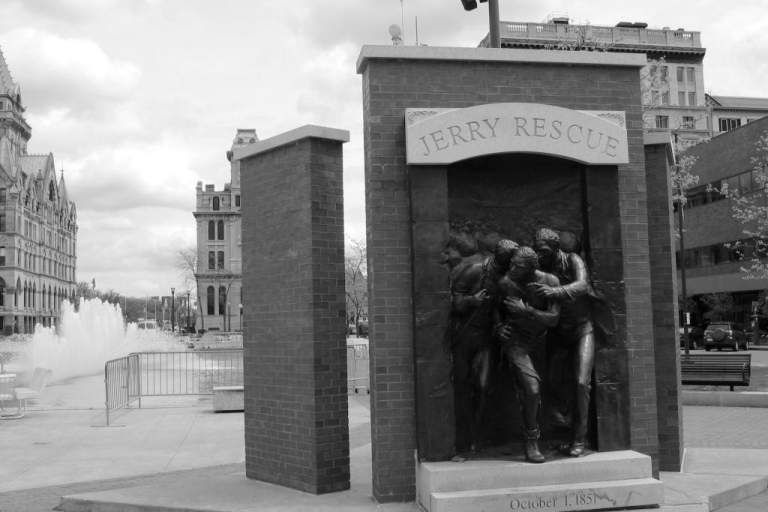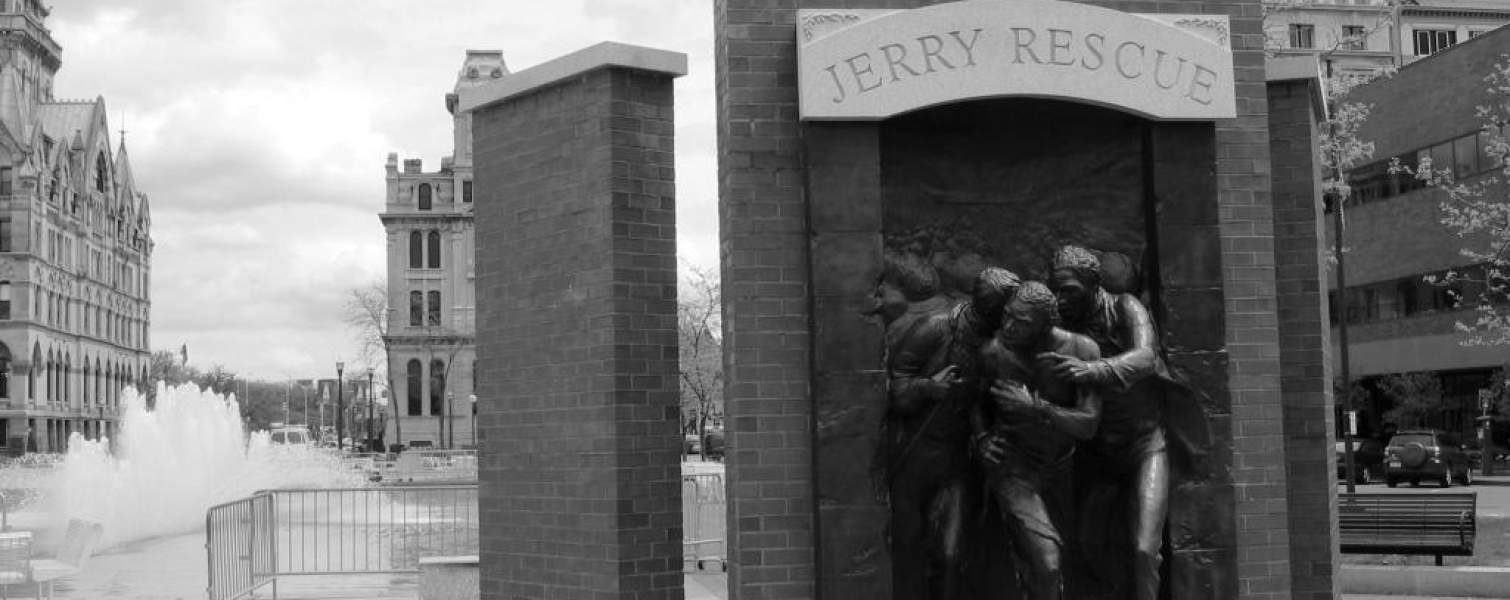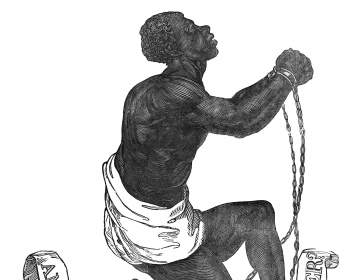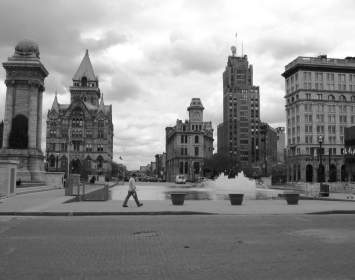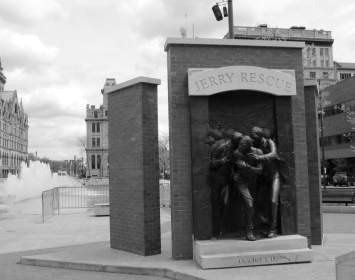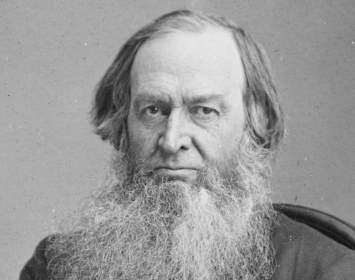Clinton Square is the site of one of the first abolitionist "mob actions" in the North to free an imprisoned fugitive slave: the October 1, 1851, rescue of William "Jerry" Henry, remembered as the "Jerry Rescue."
Henry had been arrested in Syracuse and identified as an escaped slave; Federal officials eager to compel obedience to the then-new Fugitive Slave Act determined to return him to Missouri. The arrest occurred on the very day that a major abolitionist meeting was taking place in the city. Following one failed rescue attempt, a large "mob"—actually a group of fifty-two men representing a cross-section of Syracuse’s African American and radical-reform communities—stormed a police station, battered down its doors, and rescued "Jerry" Henry, defying the Fugitive Slave Act. Within a few days, "Jerry" escaped to freedom in Kingston, Ontario.
This act had distinguished—and sometimes accidental—precursors. In May 1851, the conservative New England statesman Daniel Webster gave a speech in downtown Syracuse in which he praised the Fugitive Slave Act and called for its vigorous enforcement. This had the effect of galvanizing the local abolitionist community. The Jerry Rescue itself was coordinated in part by area abolitionist leaders, including local Underground Railroad leader Jermain Loguen and Peterboro-based philanthropist-activist Gerrit Smith. After the Rescue, Smith lauded it as a shining example of abolitionist principles in action, urging his colleagues to operate always at the "Jerry Level."
Shortly after the rescue, the Townsend Block, a large commercial building erected in 1829 on the south side of Clinton Square, was renamed the Jerry Rescue Building in commemoration of the event. This was the site of annual celebrations of the rescue; Gerrit Smith addressed each such celebration between 1852 and 1858. Also speaking at the 1858 celebration was the famous Rochester abolitionist Frederick Douglass. In 1859, Gerrit Smith declined to address the celebration, citing his growing disillusionment with what he viewed as the abolition movement’s lack of effectiveness.
Even so, a national example had been set for resistance to the Fugitive Slave Act across the North.
A monument was added to Clinton Square in 2001 recognizing the Rescue.
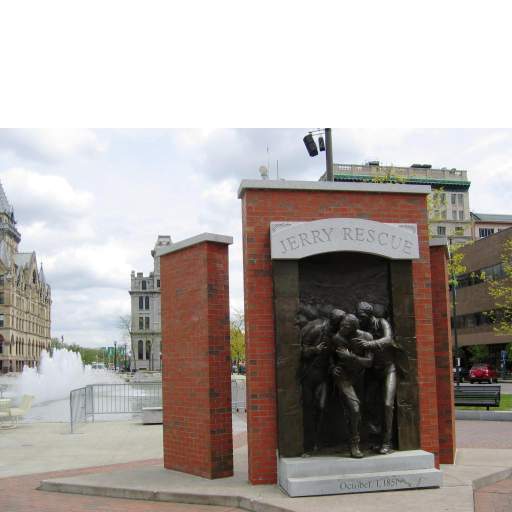
Jerry Rescue monument
This monument, added to Clinton Square in 2001, celebrates the October 1, 1851, rescue of William "Jerry" Henry, an escaped slave from Missouri. This rescue was a nationally significant victory for the abolitionist cause and helped set a pattern of Northern defiance of the Fugitive Slave Act. For more details, see Jerry Rescue Monument.
